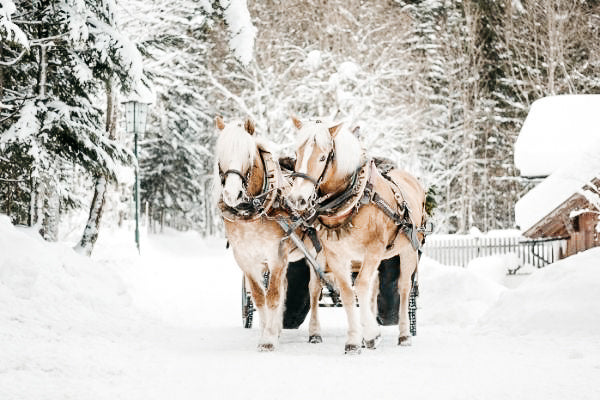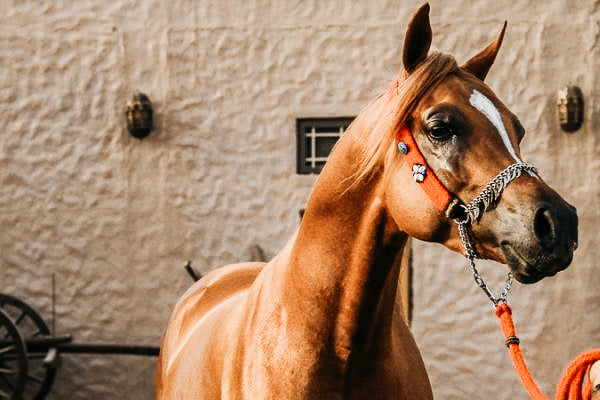
Norwegian Fjord horses – the pretty duns of the far north
There is hardly anyone who doesn't like the look of the compact ponies. The little Norwegians with their cheeky standing mane are actually more popular than ever.
Among horse breeds, this pony in particular has a high recognition value. This is not the only reason why the Fjord horse has mutated into a popular leisure horse. Its origins and past ultimately made this animal a robust and reliable partner. And that's what matters in equestrian sports.
Thank God, open stables are now the be-all and end-all of species-appropriate animal husbandry. Since this positive influence on equines, the demand for robust horses has been immense. Here the Fjord horse is clearly ahead. Still far ahead of the other horse breeds. The bitter cold does not cause the beautiful duns any discomfort and their social strength is also impressive.
Do you want to find out more about the proud “Viking horses”? La oss gå!
Origin and breeding history
Yes, the name Norwegian reveals a little about the pony's area of origin. It is believed that the Fjord horse could have descended from ancient Asian horses based on its appearance. The black eel line, the dark stripes on the legs and the typical body shape prove this theory. The pony is one of the oldest European horse breeds. Ultimately, the coastal areas of Norway can be described as the home of the animals.
Even before the Vikings settled down, they crossed their captured horses with Asian animals. Later they used the stronger pony shape to cultivate their arable land and as load carriers.
Up to approx. In 1876 crossbreeding with Dole horses (Norwegian draft horses) took place. Reason: The Fjordis should increase in size and mass. Dissatisfaction with the characteristics of the animals meant that no more cross-breeding was permitted since 1886. There was a racial purification.
The actual breeding began with the original stallion NJÅL N 166. From this three main lines emerged. These founding stallions were called BERGFAST N 635, HÅKON JARL N and ØYARBLAKKEN N 819. They all had different advantages, which they wanted to combine later.
1883 was the year in which the Fjord horse was first introduced at an agricultural exhibition in Germany. The Norwegian pony was not consolidated until 1907. Pure breeding became an integral part of Norwegian breeding organizations. As with many horse breeds, the population declined significantly due to mechanization.
In Germany, pure breeding only began in 1954. The animals were “discovered” as ideal leisure horses and the lighter, more rideable Norwegian type was carefully selected. The pretty Fjord horse was no longer just a business horse.
The Norwegian association Norsk Hestesenter keeps the original mare book. Their breeding regulations are also binding for German breeding facilities.
Appearance
In terms of size, the Fjord horse is approx. 135 - 150 cm in pony size. An expressive, pretty head with large eyes and relatively wide-set ears reveal his good nature.
The neck is particularly beautifully emphasized by the traditional standing mane clipping. Due to the continuous eel line from the forelock to the tail, the mane and the full tail have an interesting two-tone color. This eel line really makes these horses stand out.
The body is compact with a broad chest, broad torso, sloping shoulders and a well-muscled back and lumbar area. Strong limbs and well-shaped hooves of very good quality are another point of attention and indicate an overall healthy foundation.
Color nuances
The Fjordi is only available as a dun. However, there is scope here. This varies in red, brown and gray duns. Pale duns or so-called yellow duns are less common. The bright mouth is unmistakable. This flour or milk mouth, as it is often referred to, is, like the standing mane, typical of the breed.
White badges are less desirable. However, some horses have zebra stripes on their legs, which clearly characterize their wild horse origins, which go back a long way.
Essence
The chic little ones impress with a calm, balanced character. They are always sociable, uncomplicated, extremely frugal and willing to perform. The ponies are also enduring and prove to be brave and fearless in the terrain. Her reliable temperament makes her a loyal partner.
Suitability of the duns
As just described, this breed proves to be a very suitable leisure horse. Your sure-footedness off-road is very important. The handy size makes it particularly interesting for smaller adults, teenagers and children. As cuddly cuddly bears, they are a hit with the little ones anyway. The fluffy ponies can also express their peace of mind during riding lessons.
Particularly noteworthy is the suitability of the little ones as driving horses. There they are not just a visual feast for the eyes. Anyone who has ever seen these driving horses knows what we are talking about. The coachman invariably benefits from their courage, their enormous willingness to perform and their reliability.
In addition to qualifying as safe driving horses, the stable duns also present themselves at their best on the riding arena. Although the Fjordi doesn't have much freedom of movement, they can still find their way around the dressage arena. They learn quickly and confidently demonstrate what they have been taught in solid training. Circus lessons? But logical!
Things worth knowing about husbandry
The frugal, social Norwegian should be allowed to live in group enclosures. The open stable is therefore exactly the right place for him. It is important to pay attention to careful feeding! Several portions spread over the day and paddocks every hour are usually better than hay and pasture ad libitum. Otherwise the guys eat too much in a pony-like manner. Diseases of affluence such as EMS, laminitis etc. would otherwise be the result.
Conclusion: Nordic cold - not for Norwegians!
Anyone who can call a Fjord horse their own will certainly agree. The beautiful bears are unique. Her gentleness warms every heart. They make few demands and yet give so much back. In any case, a chic, lovable leisure horse with a future.
Animalons brush recommendation for the Fjord horse:
For the daily care of the Fjord horse, we recommend our Care Flex curry comb, as the horse's fur only has an insulating effect when it is clean.
After the grooming unit, the Care Flex horsehair brush brush effortlessly frees the coat from loose dust and dirt and at the same time creates an even shine on the horse's coat.
Discover more posts

4 useful tips to make riding in winter more enjoyable
Regret doesn't help. Summertime is finally over, rides in the late evening are usually a thing of the past and the weather is forcing us to rethink our clothing choices. Of course, that doesn'...
Continue reading
Arabians – noble beauties with an extra dose of stamina
Many myths are told about the origin of the Arabian horse. You probably know the sentence: God took a handful of wind and created the Arabian horse. Definitely heard, right? These and other le...
Continue reading
